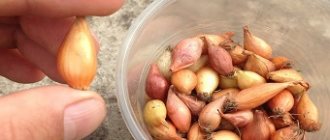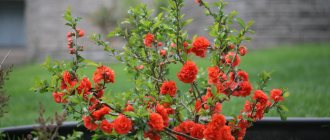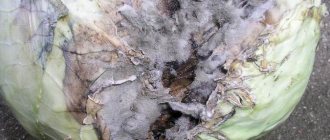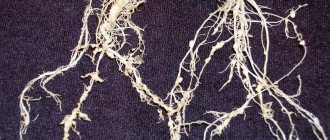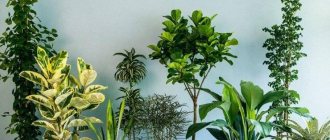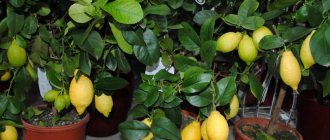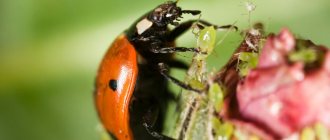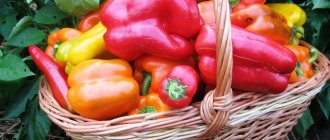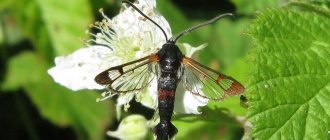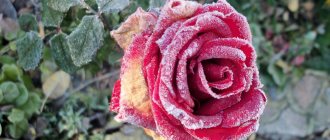Author: Natalya Category: Houseplants Published: November 02, 2018Republished: February 03, 2019Last edits: January 11, 2021
- Diseases and their treatment
- Chinese Livistona (Livistona chinensis)
Livistona (lat. Livistona) is a genus of perennials of the Palm family, growing in the nature of Australia, Oceania, Africa and Southeast Asia. The genus was named in honor of the Laird of Livingston, Patrick Murray, a plant collector who was a friend and student of Andrew Balfour. The genus includes more than 30 species. Some of them are grown in greenhouses, but there are also indoor plants among Liviston.
Types of Liviston palm
36 species of Liviston palm have been described. Most often, five are grown at home.
Livistona chinensis (livistona chinensis)
Livistona chinensis (Chinese fan palm) in nature grows up to 12 m in height, a thick trunk with a diameter of up to half a meter is covered with fibers and denticles from fallen leaves. The lower part of the petioles is covered with spines.
The fan leaf is divided into parts not by the base itself. Liviston differs from others in its slow growth, and therefore is cultivated at home more often than other species .
The leaves are drooping, the tips of the leaves are dry. The homeland of the palm tree is Southern China. Tolerates temperatures down to +8°C.
Livistona rotundifolia
The second name of the palm tree is Saribus. The trunk is smaller in diameter, the leaves are more rounded, dark green, with brownish petioles. Does not withstand temperatures below +12°C. Yellow flowers may appear.
Livistona southern (livistona australis)
Originally from Australia, tall - up to 25m, has a straight columnar trunk with a thickening at the base. The leaves do not droop, like the Chinese one.
Livistona decipiens
Leaves with deeper dissection, drooping . The reverse side is gray. The petioles have teeth instead of spines.
Livistona mariae
The leaves have a reddish tint when young. The trunk is gray. Tall.
What does a Liviston plant look like?
All representatives of the genus Livistona are trees about 25 m high with trunks of varying thickness and huge fan-shaped leaves up to 60-100 cm in circumference, shiny, dark emerald, rarely with a grayish tint. A distinctive feature of Liviston is its long petioles covered with hook-shaped spines.
In nature, it blooms, forming axillary inflorescences-cobs in a tubular leathery blanket, first straight, and later drooping. The flowers are small, bisexual, on short stalks or sessile, yellowish-white or light green. The fruits are berry-shaped, elliptical or round in shape.
At home, Livistona flowering is a rare occurrence. Indoor palm trees grow no more than 1.5-2 m in height, do not form a trunk, but grow due to luxurious leaves, which, with good care, are formed by 3 leaves in one growing season.
The plant is able to purify the air in the room where it lives from harmful substances. Astrologers claim that Livistona affects a person’s psychological state and helps timid and fearful people gain self-confidence, strengthen character, and become more decisive in critical situations.
Caring for the Liviston palm tree at home
The plant is considered unpretentious (for palm trees). It comes from the tropics; when growing, it is necessary to take into account the growing conditions in nature - high humidity and an abundance of light are required.
Illumination
The palm tree loves a lot of light, but does not tolerate direct sunlight at midday - at this time it is better to shade it. Grows well near windows facing southwest and southeast .
To ensure uniform growth of leaves in all directions, the palm tree must be rotated occasionally. In winter, the shading is removed and moved closer to the window.
Temperature
The optimal temperature in summer is from +18°C to + 22°C, in winter from +16°C to +18°C. When ventilating rooms, it must be taken into account that Chinese Livistona tolerates temperatures down to +8 °C, other types up to +12 °C.
In the southern regions, in summer the palm tree can be taken outside and placed in the shade of other trees, placed on a terrace or in a gazebo.
How to water
Water regularly, not allowing the top layer of soil to dry out, and moderately, making sure that a large amount of water does not flow out of the drainage hole . The water from the pan must be drained. In winter, the frequency of watering is reduced. If the soil is too wet, the roots may rot.
Humidity
Like all tropical plants, the palm tree loves daily irrigation with warm water from a spray bottle . Once a month, wipe the leaves with a damp cloth or sponge to remove dust.
In winter, when the radiators are running, the air in the rooms is dry. To increase humidity, hang a wet rag on the battery next to the palm tree, and place a container with wet sawdust behind the plant.
Fertilizer
Feed the palm tree from spring to autumn, 2-3 times a month, using special fertilizers for palm trees or complex fertilizers for flowers .
This video explains how to grow Livistona.
Growing conditions for Livistona
| Parameter | Spring Summer | Autumn winter |
| Location/Lighting | South window, garden or balcony. | South window + UV lamp. |
| Temperature | +18…+21 °C | +14…+16 °C |
| Watering | Often and generously, draining excess liquid from the pan after half an hour. | Only when the top 2 cm dry out. |
| Humidity | Warm shower once a week. | Regular spraying. |
| Feeding | Fertilizers for palm trees 3 times a month. | Once a month. |
Transplantation, soil
Carry out every 3-4 years and only if the rhizome extends beyond the container. When replanting, trim off the ends of overgrown roots.
You need to plant the plant in a stable, heavy pot with a thick layer of expanded clay drainage (one fifth of the total filling).
The soil mixture consists of turf soil, leaf soil, peat, rotted manure and sand in a ratio of 2:2:1:1:1. Example: if the new tub has a volume of 20 liters, 1-2 kg of each component is needed in accordance with the proportions.
Trimming Features
Old leaves gradually dry out, but do not die. They need to be pruned between March and May. To do this, use a sterile pruning shears. The petioles can be cut off only if they are already completely dry. If this condition is not met, the flower will begin to wither. Treat the sections with paraffin after drying.
Reproduction methods
Palm trees are propagated by division or seeds. The first method is possible if the plant has produced lateral shoots. In the spring, they need to be carefully separated and replanted in the soil mixture, the composition of which is indicated above.
Growing from seeds is a little more complicated:
- In February - March, soak the seeds in water and wait for swelling for 2 days.
- Plant one at a time in separate pots, creating 1 cm indentations.
- Cover with a transparent bag or place in a mini-greenhouse. The first shoots can appear either immediately or after 3 months.
- Once every 2-3 days, remove evaporation, water, adding liquid to the pan.
- When the sprouts become stronger, remove the pots from the mini-greenhouse. If necessary, transplant the plants into larger containers.
Features of transplantation
Liviston is replanted every few years, in the spring, when roots appear on the surface of the ground or from a drainage hole in a pot. The container is taken larger than the previous one, by 3-4 cm.
Important! It is better to purchase a vase that is light (not so hot from the sun’s rays) and tall, always with a drainage hole.
A drainage layer of pebbles or expanded clay, 4-5 cm thick, is placed on the bottom. Replant in a coma of earth, removing rotten or diseased roots. When purchasing a palm tree in a store, replanting it in normal growing soil is required.
Characteristics of the palm tree
Livistona is an evergreen plant belonging to the palm family. Its name comes from the famous Scottish botanist Patrick Myurrey, who lived in Livingston. During his short life, Patrick was able to collect a collection of several thousand plants, among which were huge trees with beautiful leaves that looked like shiny fans.
The Liviston palm prefers swampy soils, so in natural conditions it can be found in tropical forests along river banks, where the tree can grow up to 25 meters in height. A palm tree grows at night. These plants grow very slowly, making them well suited for growing indoors. The palm tree itself requires ample space to grow, which is why it is often found in hotel lobbies and offices.
Various types of this palm tree are suitable for growing at home, since they are all unpretentious and do not require special attention. Temperatures of 20 °C in summer and 15 °C in winter will be ideal for them. At home they do not bloom. Flowering is possible only under natural growing conditions. There are more than 30 types of livistona. The most common are the following:
Before purchasing a palm tree, you should pay attention to the color of its leaves: it should be bright green with shiny shades. If there are spots on the leaves or their tips are dry, then it is better not to buy such a plant.
Livistona is an expensive plant. After acquisition, it is recommended to replant the palm tree. In this case, it is necessary to allow the tree to adapt for one month in a new place, and then replant.
This genus of palm tree is light-loving, so it is better to place it near large windows that face west or east. You should not keep the palm tree in direct sunlight for a long time, since sunlight can cause its leaves to get minor burns and begin to turn yellow. During the winter months, the plant should be placed in well-lit areas.
As the palm grows, additional shoots may appear. They can be used to propagate the plant. The shoots should be trimmed carefully, sprinkling the cut with carbon dust to prevent infection of the tree.
The most common disease of Livistona is rotting of its roots and leaves. To kill fungi and harmful bacteria that cause various types of plant rot, it is recommended to use appropriate fungicides. When using chemicals (insecticides and fungicides), you must strictly follow the rules for their use so as not to harm the tree.
The following diseases can often be observed in any type of Liviston:
- Dry and yellow leaves. The likely reason for this is dry air and high indoor temperatures, as well as infrequent watering.
- Falling leaves and rotting roots. This palm disease is associated with overwatering and water pooling in pots. It is recommended to reduce the frequency of watering and make drainage holes in the plant pot.
Earth mixture
Ready-made soil for planting palm trees can be purchased at the store, but can be prepared at home:
- For young plants: mix humus, sand, peat, and turf soil in equal proportions . Add ash.
- To transplant adult palm trees: mix two parts humus and two parts turf soil with one part sand and peat .
Replanting after purchase
Liviston palm - how to plant and care at home
In all varieties of Liviston palm trees, the flower needs regular replanting. You need to do it as follows:
- Carefully remove the palm tree from the pot, which has become too small for it;
- Move the flower along with the soil into a new vessel and add pre-prepared soil with a nutrient mixture;
- Carefully trim off partially rotten roots (this problem often occurs due to improper watering);
- Lightly compact the soil.
You need to replant the flower often, but very carefully
Many gardeners make a big mistake by carefully cleaning the roots of the flower before “moving” to a new pot. There is no need to do this. Any touch to the roots is a strong stress for the plant, so it is better not to touch them at all, then the flower will adapt well and take root in the new place. The pot should be high enough and stable so that hanging leaves do not weigh down the container.
The optimal time for transplantation is the last ten days of March or the first ten days of April, when daylight hours are significantly longer. If the roots have already grown to the hole at the bottom of the vessel, you should not hesitate with this procedure - prolonged exposure to cramped conditions can significantly slow down the development of the flower. The frequency of transplantation depends on the growth rate. If the palm tree grows upward quickly, you will have to replant it more often.
Interesting! In nature, the plant develops a powerful trunk. However, when grown in a pot, the flower spends all its energy on the formation of leaf blades, so instead of a tree, you get a miniature shrub.
Soil for Livistona in a pot
The Liviston palm tree is quite demanding on the chemical composition of the soil. If you don’t want to make a nutrient mixture yourself, it’s best to purchase ready-made soil for plants of the Palm family in a specialized store. If this is not possible, a self-made mixture will be in no way inferior in quality to a purchased one. The main thing is that the composition includes:
- Turf;
- Peat;
- Leaf humus;
- River sand.
All components must be mixed in equal proportions. Old rotted manure has a good effect on flower development. In order to better absorb moisture, you can add charcoal, broken into small pieces, to the pot.
Bone meal is often added to the soil composition. It is rich in vitamins, minerals and other nutrients and stimulates active plant growth. Pebbles, crushed stone, and expanded clay are good for drainage. It is known that a high level of soil acidity prevents the plant from absorbing nutrients, so it is better to choose soil with a neutral or slightly acidic reaction.
The soil must contain a large amount of nutrients
Particular attention must be paid to the drainage layer. The water should drain quickly and not stagnate in the pot. Increased soil moisture can lead to rotting of individual parts of the flower and fungal infections.
Trimming Features
The palm tree has a single growth point - at the top of the stem, and therefore the palm tree is not shortened . Only completely dried leaves with cuttings are removed (broken off).
Important! Leaves are torn off only when the petioles have dried.
The drying of the tips of the leaves of Livistona is its peculiarity; there is no need to trim them. If the ends of the leaves have dried out significantly and have lost their decorative appearance, careful trimming of the yellowed tips is allowed. The drying of the leaves continues - it is necessary to look for the cause.
This video talks about the features of caring for palm trees and how to plant this evergreen beauty.
Possible problems during cultivation
Changes in the leaves of Livistona indicate problems in the maintenance of the tree.
Here are some of them:
- The leaf tips turn brown when indoor humidity is low. Frequent spraying is required.
- The green mass turns yellow due to lack of watering or nutrients in the soil. And also with excess sunlight.
- The leaves become covered with brown spots when watered with hard water, waterlogging of the soil, or a sharp decrease in the temperature of the apartment.
- The tips of the leaves become brown when there is a lack of liquid, low temperature, or dry air.
- The palm tree stops growing due to lack of nutrition.
- Leaves become spotted if watering is insufficient.
Problems include the emergence of diseases and pests.
Diseases and pests
Palm trees have strong immunity. But the fungus sometimes bothers the plant. Its presence is recognized by dried or lightened leaves. Appears due to improper care. What to do in this case? Replace the soil, disinfect the planting container, spray with fungicides.
Pests of Livistona are mites, scale insects, and mealybugs.
Important! From the attacks of harmful insects, the palm tree weakens and withers.
To destroy pests, the drugs Aktara, Fitoverm, Akarin are used.
Livistona is a prominent and beautiful palm tree. Looks good in apartments and office spaces. A little attention and easy care will ensure the safety of this tropical beauty for many years.
Reproduction methods
The generally accepted method of propagation is by purchased seeds. Before planting, they are soaked for 1-2 days. There are tips on crushing seeds before sowing, scalding them with boiling water, soaking them in acid - do not do this, the seeds will die .
Sow in February-March 1 per pot with prepared warm and moistened soil, to a depth of 1 cm. Cover the container with a transparent film and regularly moisten it with a sprayer .
After about 3 months, the seeds should germinate , after which the film is removed from the pot.
Sometimes the palm tree develops lateral shoots. They are carefully separated by hand and placed in another container.
Important! The shoots and roots are separated from each other only with your hands, not with a knife!
Reproduction
Seeds
- Keep the seeds in a weak solution of potassium permanganate or “Kornevin”.
- Plant in a moist substrate 1 cm deep, cover with cling film (glass) and wait for sprouts to appear. Ventilate the greenhouse daily and spray the soil with water a couple of times a week.
- When the seeds germinate, remove the film and replant the plants in separate pots. The lateral shoots are carefully broken off and also transplanted.
Livistona propagation by seeds at home is best done in April-May : they will take root better.
On some forums there is advice to crush the seeds before planting or scald them with boiling water. You can't do this!
Keep in mind that the soil should be nutritious, light and loose. Its acidity is not higher than 7.5 pH. You can buy soil mixture for growing palm trees in the store, but you can also prepare it yourself. Mix 2 parts each of coarse peat and pine bark, 1 part each of charcoal, pebbles (or dolomite crushed stone), perlite and a handful of bone meal, heat in the oven, cool.
Pests and diseases, control measures
The most dangerous pests:
- Shield. Brown, raised, sticky spots appear on the leaves. Plants are treated with insecticides Inta-Vir, Actellik , after removing pests manually using a napkin moistened with alcohol (you can simply wipe the leaves).
- Spider mite. White spots and thin cobwebs appear on the back of the leaves. Before using acaricides Talstar, Demitan, Fitoverm, the leaves must be wiped with a cloth and soapy water. Not only the plant is treated, but also the vase and tray.
- Mealybug. In the axils of the leaves, on the trunk there is a whitish coating similar to cotton wool . Treat with Talstar, Inta-vir, Actellik. First remove the nests with a cloth moistened with soapy water or alcohol.
Check all the plants in the house - these pests don't just live on palm trees.
This video shows the types of palm trees and talks about how to grow them at home.
Livistona is affected by fungal diseases - yellow spots appear on the leaves, the roots rot. The reasons are non-compliance with growing conditions, most often excessive moisture and spraying. Control means treatment with fungicides; in case of root rotting, palm tree transplantation.
Note! When replanting, it is necessary to use a new pot and new soil; the roots must be thoroughly cleaned of old soil and washed with a solution of potassium permanganate.
Diseases and pests
Diseases
The Liviston palm tree is highly resistant to viral and bacterial diseases. However, it can still suffer from fungal diseases, such as root rot, sclerotinia, leaf spot and wilt.
When affected by spotting, streaks and spots from black to brownish-red color form on the surface of the foliage, and most often these formations have a yellow border. Over time, the spots increase in size and connect with each other, resulting in the formation of large, irregularly shaped necrotic areas. In some cases, spots form on very young leaf blades. It was noticed that those leaf blades that are not moistened with water from a spray bottle are not affected by spotting. That is why some experts advise increasing air humidity in another way, for example, you can pour wet pebbles into a tray, on which you then place a container with a palm tree. Also, in order to prevent the development of spotting, it is recommended to pay attention to the lighting: the foliage must receive the required amount of light, and even better, if the lighting is very bright.
If a palm tree is infected with rhizostonia, late blight, fusarium or pythium, it will begin to rot. Seedlings, as well as Liviston seeds, can be affected by sclerotinia. As many people know, it is better to prevent a plant from being affected by a disease than to treat it for a long time. That is why pay special attention to measures to prevent these fungal diseases:
- provide the bush with proper care, as well as the most suitable conditions for its growth and development;
- Before sowing, the seed material is immersed for 30–40 minutes in a solution of potassium permanganate for disinfection.
If Livistona is nevertheless affected by a fungal disease, then in order to cure it, you will have to treat the bush with a fungicide solution.
Pests
Whiteflies, mealybugs, scale insects, thrips and spider mites can settle on such a plant. These pests are sucking pests, meaning they pierce the surface of the leaves and suck out the juice from them. In order to get rid of them, the palm tree is treated with an insecticide. But if scale insects or scale insects have settled on it, then before spraying the bush with a pesticide, you need to remove the pests with a cotton swab moistened with alcohol. The bush is treated with an insecticide outdoors.
Please note that spider mites are not insects, which is why they are not afraid of insecticides. In this case, acaricides are used for treatment. Today, on the shelves of specialized stores you can find insectoacaricidal drugs that can destroy both arachnids and insects, for example: Aktara, Fitoverm, Aktellik, Akarin, etc.
Possible problems
Livistona can also suffer if it is not cared for properly or if suitable conditions for growth are not provided. For example, if the room is cool, the lighting is poor, and there is very little magnesium in the soil mixture, then this can cause the development of chlorosis of the lower leaf blades. If the plant does not have enough nutrients, and the soil mixture is excessively acidic, and does not contain manganese and iron, then chlorosis of young leaf blades may develop because of this. When the first signs of chlorosis appear, optimal conditions must be created for the palm tree, and it should also be fed foliarly with a nutrient solution that includes the missing elements.
If a bush lacks potassium, its leaf blades begin to dry out. First, translucent spots of yellow or orange color form on the old foliage, after which necrosis of the edges of the plate appears. Then the leaf begins to dry, curl and change its color to orange. If you find small necrotic spots on the foliage, then this is a sign that the flower lacks zinc. With a lack of nitrogen, the foliage becomes faded and its development worsens. If the soil mixture in a pot becomes salty, the tips of the lower leaf blades will first turn brown, and then the entire leaves will darken.
If yellow or brown spots form on the surface of the foliage in summer, this is the result of excessively intense lighting. This can also cause leaf curl to develop. If the bush does not receive enough moisture, then the tips of its leaf blades die off and the bush dries out. Moreover, in this case, the old leaf plates dry out first. If water regularly stagnates in the substrate, then because of this the bush becomes dark and rot appears on it.
Possible problems and their solutions
Caring for the Liviston palm tree at home is not difficult, but problems can still arise.
- The leaves are drying. Possible reasons:
- Insufficient watering for a month or more.
- Lack of nutrients, feeding is necessary.
- Exposure of the plant to direct sunlight at midday in summer. The palm tree is slightly shaded.
- The type of Livistona is Chinese, only the tips of the leaves have dried out: you don’t need to do anything, this is a normal phenomenon.
- Stunted growth. Possible reasons are lack of light, low temperature, and the onset of a dormant period in late autumn and winter .
- Leaves wither - insufficient watering for one to two weeks. Root rotting is possible due to excessive watering. In this case, replanting is necessary with mandatory inspection of the root system.
If these simple conditions are observed when growing Livistona, you can easily get a real palm tree with long spreading leaves at home.
Planting and caring for Livistona
- Flowering: The palm tree is grown as an ornamental foliage plant.
- Lighting: bright diffused light.
- Temperature: during the period of active growth – 20-28 ºC, in winter – 14-18 ºC.
- Watering: during the growing season - moderate but regular, during the dormant period - infrequent and meager.
- Humidity: high. In the warm season, it is advisable to spray the leaves daily with warm water.
- Feeding: from April to August - once every 3-4 weeks with mineral complex fertilizer for palm trees. From time to time you need to spray the leaves with a solution of microelements.
- Dormant period: not clearly expressed, but in winter all vegetative processes are slowed down.
- Repotting: as the plant's roots fill the pot.
- Reproduction: seed.
- Diseases: leaf spot, root rot, late blight, sclerotinia, wilt, chlorosis.
- Pests: thrips, mealybugs, scale insects, whiteflies, and spider mites.
Read more about growing Livistona below.
